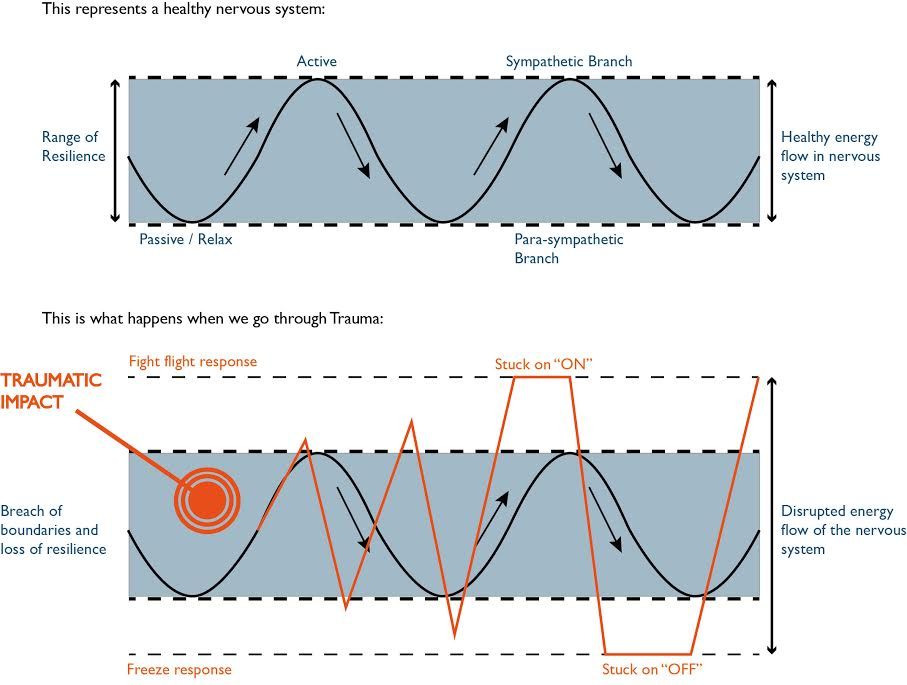- Do I have PTSD?
- Why healing from PTSD is so terribly hard.
- The basics of guided meditation for PTSD.
- Meditation for Complex PTSD or PTSD isn't always a good thing.
- Getting started with meditation for Trauma.
- How meditation is the single most powerful tool to heal Trauma.
- What you need to start healing your Post-Traumatic Stress.
Do I Have PTSD?
If your Post-Traumatic Stress symptoms persist long after the event itself, you might be suffering from PTSD.
PTSD is a condition in which you cycle constantly between feeling overwhelmed, followed by a collapsed state.
Trauma activates your fight or flight responses. It causes your survival responses to be turned "ON". The trouble with PTSD is that being on “ON” continues long after the event or period of overwhelming stress.
Your energy is mobilized for survival, but you are unable to switch that mechanism off afterward, and so you continue to be in a state of hyperarousal.

Once that state of hyperarousal—with all the PTSD symptoms that can go with it—depletes your energy, you will cycle into a “freeze” state. The "freeze" state is often marked by depression, dissociation and numbness.
This cycle of hyperarousal followed by collapse can go on indefinitely without proper intervention.
Why Healing from PTSD Is So Terribly Hard
Furthermore, you disconnect from a part of yourself to protect yourself. What happens when you disconnect is that your energy moves into your head as excessive thinking. Those thinking patterns will always have some form of guilt, blame, shame, or self-reproach to them. And, they will tie up with the emotions you attempted to disconnect from.
These thinking patterns of guilt, blame, self-reproach or shame are your binding factors. They help you to cope, but simultaneously keep activating the underlying emotions of either anger, fear, or sadness that are overwhelming to you.
+ Read more about why healing from PTSD is so hard
It is these binding factors that make it so hard to move out of a traumatic state as they serve as a buffer to deal with feeling overwhelmed and at the same time keep the whole wheel of suffering ongoing. They are the lube that oils the wheel, for better and for worse.
The Basics of Guided Meditation for PTSD
You can’t start from where you are not. If you are hypervigilant, anxious, dissociated, or depressed, you have to start from there. It is highly frustrating to try to aim for relaxation when you are feeling overwhelmed; frankly, it is impossible.
- Start by addressing what is in the present moment. This will be either the overwhelming state you find yourself in or the disconnected state.
- Next, work through the different levels of dissociation. The various elements of dissociation are depression and numbness, addiction, shame, guilt, self-reproach, and blame. Your core and coping emotions are anger, fear, or sadness.
- Thirdly, you need to address both the cognitive part and the somatic part if you want to be successful in healing and meditation for PTSD. It is the latter that actually helps you to release, integrate, or transform your emotional residue.
- Lastly, you need to reestablish healthy boundaries and vulnerability. In other words, you need to know with whom it is safe to open up and who you should keep at a distance. This can be done by exploring—through guided meditation for PTSD—where you either lacking or overdoing your boundaries or ability to be vulnerable.
There are very few meditations available that really address the complexity of PTSD. Given the complexity of PTSD, you don’t want a hit and miss approach. Too much is at stake when you are suffering from PTSD or Complex PTSD.
Meditation for Complex PTSD or PTSD Isn’t Always a Good Thing
Meditation for PTSD isn’t always a good thing. Relaxation can be triggering as it makes you vulnerable. It takes away your defenses that have been put in place for good reason.
Any form of child abuse will have had an element to it where your vulnerability was dishonored. In turn, this causes your experience of vulnerability to be negatively tainted.
As meditation touches on that part of vulnerability, it can trigger the emotional wound that relates to the time when your vulnerability was dishonored.
Meditation, then, can become a conflict. One part of you sees the need to slow down and heal, while another part of you does not want to come anywhere close to your internal pain.
In conclusion, meditation, and especially for PTSD and CPTSD, needs to be done with a lot of care. Not all meditations are by definition helpful for PTSD. If they are not specifically designed for working through PTSD they can make you feel worse.
When you suffer from PTSD Symptoms, being hypervigilant and 'on alert' is built into your system as a survival mechanism. Relaxation through meditation will likely feel as though you are letting your guard down, which you will perceive as dangerous.
Getting Started with Meditation for PTSD
Have a listen to this video here below on how to get started with meditation for trauma.
How Meditation for PTSD is The Single Most Powerful Tool to Heal
Meditation for PTSD isn’t easy!
There is the misconception that meditation brings peace, or that you need to force your mind to be quiet.
Ultimately, meditation can bring a sense of peace and quiet, but more often than not, meditation is painful at first.
When you struggle with the symptoms of PTSD—hypervigilance, depression, anxiety—then those are the first things that you will have to sit with.
Meditation in this context requires you to practice containment and resilience. This will enable you to sit with more of yourself, which is your suffering.
The more that you can contain of yourself, the more of your emotional residue will get processed. Just release in itself—without proper containment—won’t help you process. You will likely fall into a build-up and release of emotion over and over again. Similarly, only talking or thinking about what happened to you won’t do it either. You need that middle path of sufficient containment, a clear cognitive understanding of what is happening to you, and getting an entry into the body so that you can feel what is happening to you.
If you have these three bases covered—sufficient containment, a cognitive understanding, and having a somatic awareness—only then can you successfully process, release, transform, or integrate the energy of your trauma.
+ Start using The Trauma Care Audio Guided Meditations to make a change in your life
What You Need to Start Healing Your Post Traumatic Stress
Let’s recap what we have discussed so far:
You have PTSD when you continuously cycle between being flight-fight activated, followed by collapse and freeze.
Part of that cycle—what makes healing from PTSD so tough—is that your thoughts get tied up with those overwhelming emotions. Those thinking patterns will involve blame, guilt, self-reproach, shame, embarrassment, pride, self-righteousness, or distrust.
To start meditation for PTSD, you will need to start from where you are. You will have to work through the different layers that make up dissociation. Healthy boundaries and vulnerability need to be reestablished, and your post-trauma needs to be addressed both cognitively and somatically.
Applying meditation can be contraindicative, and needs to be done with care. Opening up too fast too soon can be triggering, and can make you feel worse. That being said, meditation specifically designed for working through complex trauma and PTSD can make all the difference to your healing process.
Through building up containment and resilience, you will be able to process your emotional residue and move on with your life.

